Table Of Contents:
- Ceramic Coating vs Traditional Wax: Key Benefits
- Understand the Differences Between Ceramic Coating and Wax
- Evaluate Application Processes for Ceramic Coating and Wax
- Investigate Cost Considerations for Wax and Ceramic Coatings
- Review How Each Option Affects Vehicle Appearance
- Delve Into Maintenance Requirements for Each Finish
- Compare Environmental Impact of Ceramic Coatings and Wax
- Conclusion
Ceramic Coating vs Traditional Wax: Key Benefits
When it comes to protecting automotive paint, many car owners face the dilemma of choosing between ceramic coating and traditional wax. While wax has long been a staple for vehicle care, ceramic coatings offer significant advantages, such as superior durability against acid rain and iron deposits. This article will explore the key differences in application processes, cost considerations, and maintenance requirements for both options. By understanding these aspects, readers will gain insights to make an informed decision, ensuring their vehicle remains protected and looking its best with the right finishing solution.
Understand the Differences Between Ceramic Coating and Wax
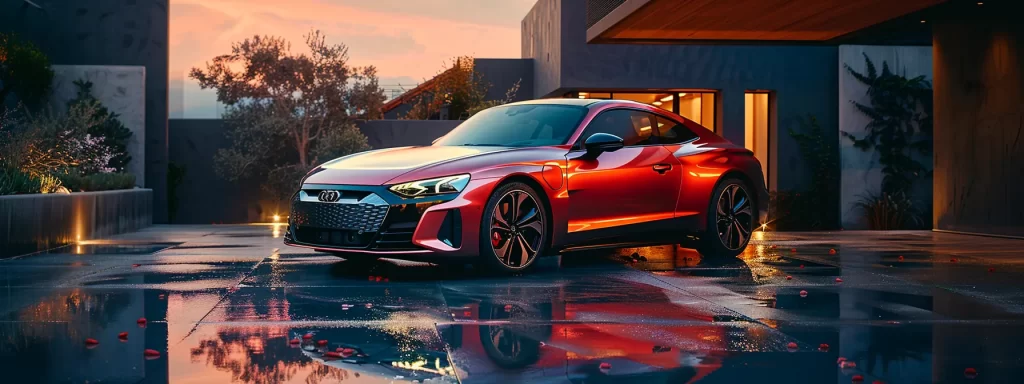
Ceramic coating offers superior chemical resistance and long-lasting protection for a vehicle’s paint, setting it apart from traditional wax. While wax provides a cost-effective solution for enhancing surface shine and protection, it lacks the durability that ceramic options deliver. This section covers how ceramic coatings safeguard against environmental damage and the benefits of wax, alongside an exploration of the durability and longevity of both choices using providers like ir auto solutions and ceramic coating asheville.
Examine How Ceramic Coating Protects Vehicle Paint
Ceramic coating provides exceptional protection for vehicle paint by forming a strong, durable layer that undergoes a curing process to bond with the surface. This advanced technology effectively shields against tar, dirt, and other environmental contaminants that can tarnish a vehicle’s appearance. Unlike traditional wax, which can wear off quickly, ceramic coatings maintain their integrity over time, ensuring that both the paint and windshield remain in pristine condition.
- Ceramic coating bonds with the paint during curing.
- Protects against contaminants like tar and dirt.
- Outlasts traditional wax by maintaining effectiveness over time.
Discover the Benefits of Traditional Wax for Car Surfaces
Traditional wax remains a popular choice in the automotive industry due to its ability to enhance the surface shine of a vehicle while providing a layer of protection against dirt and environmental contaminants. This cost-effective solution forms a chemical bond with the paint, creating a barrier that can resist acids and other harmful substances. Its ease of application and ability to restore the appearance of faded paint make it an appealing option for everyday car owners looking to maintain their vehicle without investing in more advanced products such as ceramic coatings.
| Feature | Ceramic Coating | Traditional Wax |
|---|---|---|
| Application Method | Requires professional installation | Can be applied by the owner |
| Durability | Lasts for several years | Generally lasts for a few months |
| Protection Level | Superior protection against dirt and chemicals | Basic protection against dirt and minor contaminants |
| Maintenance | Low maintenance required | Frequent reapplication needed |
| Cost | Higher upfront investment | Lower initial cost |
Learn About Durability and Longevity in Both Options
When comparing the durability and longevity of ceramic coatings and traditional wax, the differences are significant. Ceramic coatings, composed of advanced quartz technology, provide a robust shield against environmental hazards, lasting several years with minimal maintenance. In contrast, traditional wax offers basic protection but typically requires frequent reapplications to maintain its benefits, making it less suitable for long-term use on both painted surfaces and plastic components of a vehicle.
Now that the distinctions are clear, it is time to consider how each is applied. Understanding these processes will guide your choice and enhance the care of your vehicle.
Evaluate Application Processes for Ceramic Coating and Wax
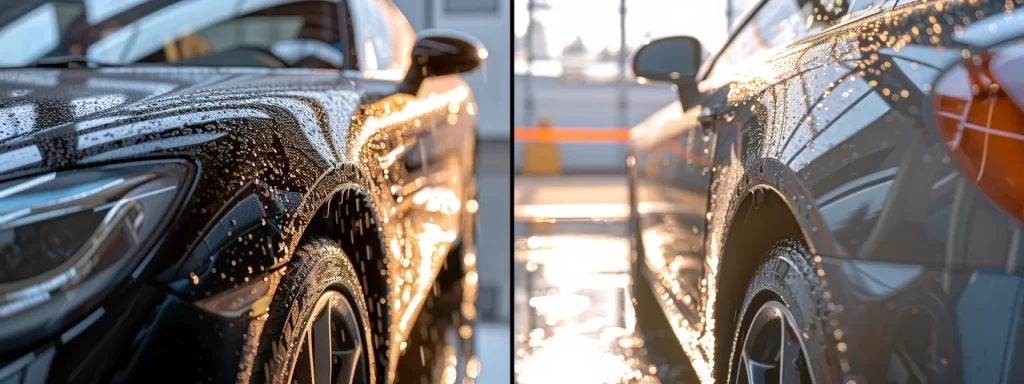
Preparation steps for applying ceramic coating involve meticulous cleaning and a time investment for optimal results, which benefits from the hardness derived from silicon dioxide. In contrast, traditional wax can be easily applied at home, making it accessible for everyday car owners. Understanding these differences helps users decide which option suits their needs for vehicle care and protection.
Compare the Preparation Steps for Each Type of Application
When preparing for the application of ceramic coating, thorough cleaning is essential to remove dust, contaminants, and any signs of corrosion, ensuring a flawless bond with the vehicle‘s surface. This process can involve auto detailing techniques that go beyond a standard wash, often requiring a clay bar treatment to eliminate embedded particles. In contrast, traditional wax application is more straightforward, allowing customers to apply it at home with minimal preparation, often just requiring a quick wash to create a clean surface free of brake dust and grime before waxing.
Discuss the Time Investment Needed for Ceramic Coating
Applying ceramic coating typically requires a significant time investment due to its detailed preparation and installation process. This involves thorough cleaning and potentially multiple steps, including the use of paint protection film and advanced materials like graphene, to ensure a flawless bond. Additionally, after application, it is essential to allow sufficient curing time to protect the vehicle‘s paint from ultraviolet rays, making the initial commitment worthwhile for long-lasting durability and warranty benefits.
Understand the Ease of Applying Traditional Wax at Home
Applying traditional wax at home offers car owners a straightforward solution to enhance their vehicle’s appearance while providing a layer of protection against contamination and pollution. This process typically involves selecting a quality sealant or polymer wax, which is user-friendly and can be easily applied without professional assistance. By simply cleaning the metal surface of the vehicle and then applying the wax, owners can achieve a brilliant shine while safeguarding against harmful elements, making it an ideal choice for those who seek both convenience and cost-effectiveness in vehicle maintenance.
Every choice has its price. Understanding the costs of wax and ceramic coatings is key to making the right decision for your vehicle.
Investigate Cost Considerations for Wax and Ceramic Coatings
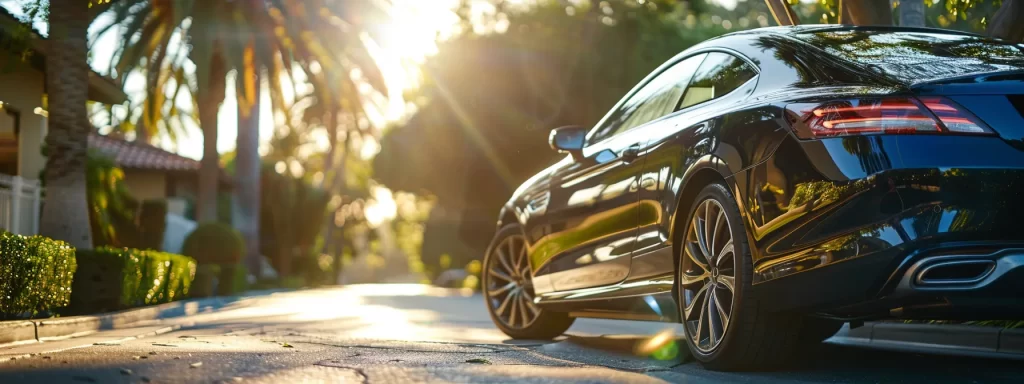
Initial costs for ceramic coating are generally higher compared to traditional wax, making it essential for consumers to analyze both options. Long-term value can shift based on maintenance expenses, as ceramic coatings necessitate less frequent applications and provide superior protection against wear and tear. Factors such as product quality, application methods, and necessary preparations, including eliminating clay and debris, influence pricing for each choice.
Understanding these cost considerations equips car owners with practical insights, allowing informed decisions regarding their vehicle‘s care. Detailed analysis will clarify how maintenance and durability affect overall expenditure, highlighting the advantages of each protective solution.
Analyze the Initial Costs of Ceramic Coating Versus Wax
The initial costs of ceramic coating are generally higher than those of traditional wax, particularly in areas like Asheville where professional application may be necessary for optimal results. While a ceramic coating provides superior gloss and long-lasting protection against wear from mud and stains, many car owners may find the upfront investment worthwhile due to decreased maintenance costs over time. Investing in ceramic coating can lead to significant savings by reducing the frequency of reapplications necessary with wax, allowing vehicle owners to maintain their cars with less ongoing effort.
Consider Long-Term Value and Maintenance Costs
When evaluating long-term value and maintenance costs, ceramic coatings generally offer a more economical choice over time despite their higher initial price. Their remarkable durability minimizes the frequency of reapplications, compared to traditional wax which requires more regular maintenance. This extended protection against environmental damage ultimately saves vehicle owners time and money, allowing them to invest in lasting solutions that maintain their car’s appearance without the hassle of constant upkeep.
Identify Factors That Affect the Price of Each Option
Several factors influence the pricing of ceramic coatings and traditional wax, impacting the overall cost for vehicle owners. The complexity of application plays a significant role; ceramic coatings often require professional installation, which includes detailed preparation and curing times that contribute to higher costs. Conversely, traditional wax can be easily applied at home, resulting in lower upfront expenses and making it more accessible for everyday car owners seeking cost-effective maintenance solutions.
The cost is only part of the story. The real question lies in how each choice transforms the look of a vehicle.
Review How Each Option Affects Vehicle Appearance
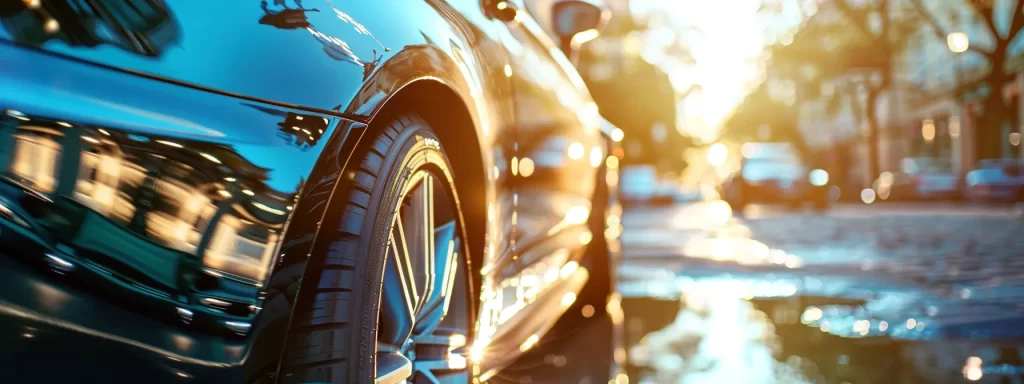
Ceramic coatings significantly enhance gloss and shine on a vehicle‘s surface, offering a high level of reflectivity and durability. In contrast, traditional wax can add depth to the paint color, providing a warm and rich finish. This section examines how each option affects the overall appearance of vehicles, highlighting the notable benefits of both ceramic coatings and wax.
Assess How Ceramic Coatings Enhance Gloss and Shine
Ceramic coatings significantly enhance the gloss and shine of a vehicle‘s surface, offering a level of clarity that traditional wax products often cannot match. The advanced technology behind ceramic coatings creates a thick, protective layer that reflects light more intensely, resulting in a deep, mirror-like finish. This brilliance not only elevates the vehicle‘s appearance but also provides long-lasting effects that retain their glow even in harsh environmental conditions.
| Aspect | Ceramic Coatings | Traditional Wax |
|---|---|---|
| Gloss Level | High, mirror-like finish | Moderate, warm depth |
| Durability of Shine | Long-lasting, resistant to fading | Short-lived, needs frequent reapplication |
| Protection from Contaminants | Superior, shields against dirt and chemicals | Basic, limited resistance |
Determine if Traditional Wax Adds Depth to Paint Color
Traditional wax can indeed add depth to a vehicle‘s paint color, enhancing its appearance significantly. By creating a warm, rich finish, wax provides a visually appealing layer that emphasizes the nuances in color, making paint jobs look more vibrant. Car owners often appreciate this benefit, especially when they wish to restore a faded appearance or simply enhance their vehicle‘s aesthetic appeal with an easily applicable solution.
As the gleam of each finish catches the light, the importance of care becomes clear. Understanding the maintenance needed for each option is key to preserving that impressive look.
Delve Into Maintenance Requirements for Each Finish
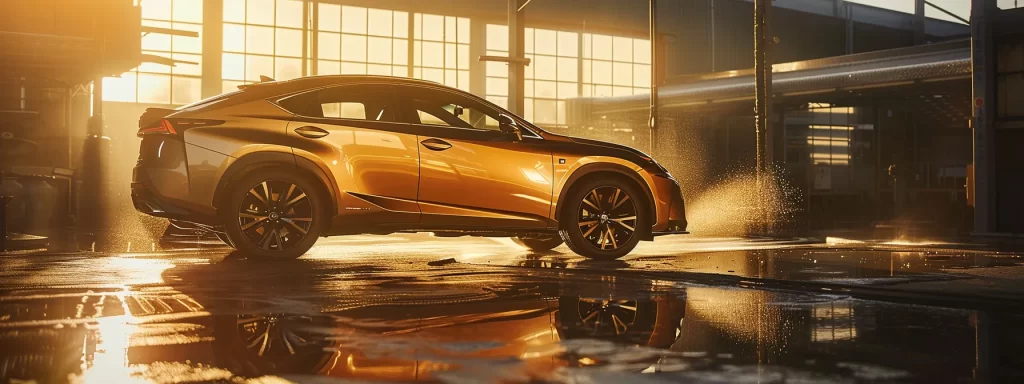
Maintaining vehicle finishes varies significantly between ceramic coatings and traditional wax. This section examines the cleaning requirements for both types, along with the frequency of reapplication needed to sustain their protective qualities. Additionally, it explores how environmental conditions can impact the longevity of each option, offering practical insights for vehicle owners seeking optimal care.
Explore Cleaning Needs for Ceramic-Coated Versus Waxed Cars
Cleaning needs vary significantly for vehicles treated with ceramic coatings compared to those protected with traditional wax. Ceramic-coated cars typically require less frequent washing due to the hydrophobic properties of the coating, which actively repels water and dirt, keeping the surface cleaner for longer. In contrast, waxed vehicles tend to accumulate dirt more quickly and necessitate regular washes to maintain their shine and protective layer, often leading to increased labor and time commitments for car owners.
- Ceramic coatings repel water and dirt, reducing wash frequency.
- Waxed surfaces require more regular cleaning to sustain their appearance.
- Investing in ceramic coatings streamlines maintenance efforts.
Investigate How Often Reapplication Is Necessary
The frequency of reapplication varies significantly between ceramic coatings and traditional wax, impacting long-term vehicle maintenance. Ceramic coatings usually require reapplication every two to five years, depending on the product’s quality and environmental factors, offering extended protection with minimal effort. In contrast, traditional wax needs to be reapplied every three to six months, as it can wear off more quickly due to exposure to the elements, leading to higher maintenance demands for car owners seeking consistent shine and protection.
Understand the Impact of Environmental Conditions on Both
Environmental conditions play a significant role in the maintenance requirements for both ceramic coatings and traditional wax. For instance, ceramic coatings offer superior protection against UV rays, dirt, and harsh weather, allowing vehicles to remain cleaner for extended periods, thus reducing the frequency of washes. Conversely, traditional wax can degrade more quickly when exposed to acid rain or extreme temperatures, necessitating more frequent reapplications to maintain an effective shine and protection for the vehicle‘s surface.
Each finish requires care, but the impact extends beyond the surface. Next, the environmental consequences of ceramic coatings and wax reveal another important layer to consider.
Compare Environmental Impact of Ceramic Coatings and Wax
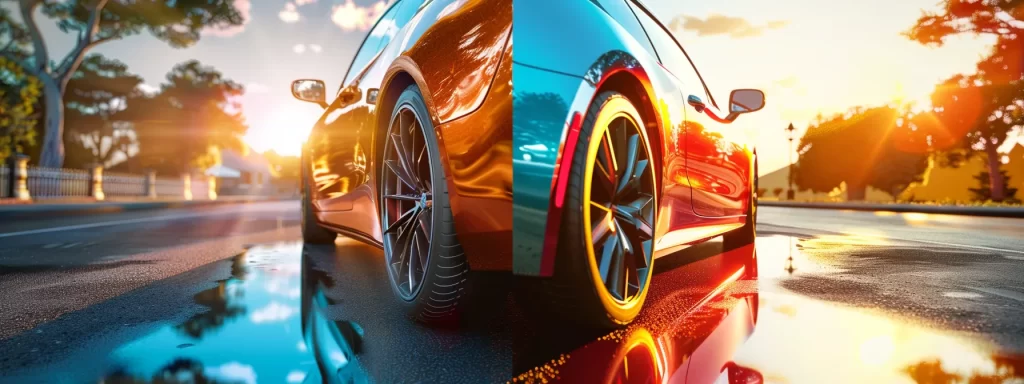
The environmental impact of vehicle care products is an essential consideration for modern car owners. This section examines the eco-friendliness of ceramic coatings, noting their long-lasting benefits and reduced need for frequent applications. It also evaluates the sustainability of traditional wax options, highlighting their biodegradability and potential chemical concerns. Each analysis offers valuable insights into making responsible choices for vehicle maintenance.
Study the Eco-Friendliness of Ceramic Coatings
Ceramic coatings present an eco-friendlier option for vehicle protection when compared to traditional wax. Their long-lasting durability significantly reduces the frequency of applications, minimizing waste and the environmental footprint associated with manufacturing and disposal. By providing superior protection against contaminants and ultraviolet rays, ceramic coatings help preserve a vehicle’s finish, leading to prolonged use without the need for constant reapplication, ultimately supporting a more sustainable approach to car maintenance.
Evaluate the Sustainability of Traditional Wax Options
Traditional wax options have varying degrees of sustainability, often dependent on their ingredients and manufacturing processes. Many wax products are made from natural waxes that are biodegradable, offering a more eco-friendly choice compared to synthetic alternatives. However, frequent reapplication can lead to increased waste and necessitate additional resources for both production and disposal, challenging their overall environmental impact.
Conclusion
Ceramic coatings provide long-lasting protection and enhanced durability compared to traditional wax, making them a superior choice for vehicle maintenance. They require less frequent reapplication and offer better resistance to environmental contaminants, ultimately saving time and effort for car owners. While traditional wax can enhance shine and color depth, it does not match the longevity and effectiveness of ceramic options. Understanding these benefits empowers vehicle owners to make informed decisions that preserve their cars’ appearance and value over time.
